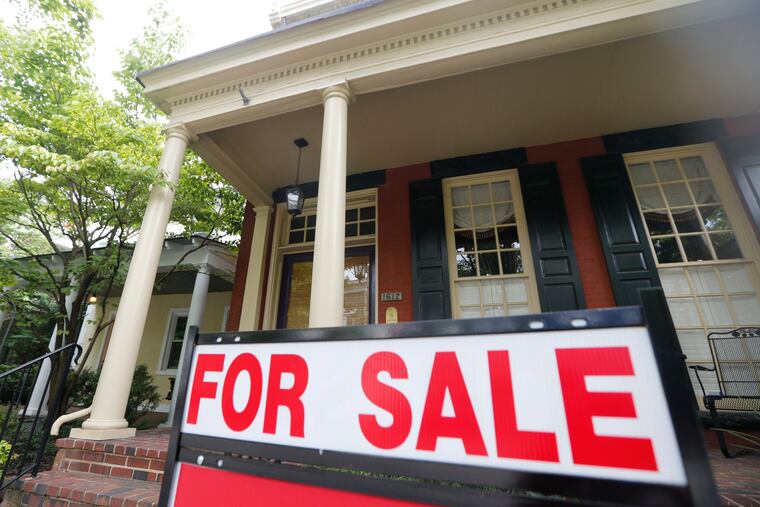30-year mortgage rate falls to its lowest level in nearly three years
Economic uncertainty drove mortgage rates down, according to Freddie Mac data released Thursday, with the popular 30-year reaching its lowest level in nearly three years.

Economic uncertainty drove mortgage rates down, according to Freddie Mac data released Thursday, with the popular 30-year reaching its lowest level in nearly three years.
The 30-year fixed-rate average fell to 3.55% from 3.60% -- the lowest since November 2016 -- with an average 0.5 point. (Points are fees - equivalent to 1% of the loan amount -- paid to a lender on top of the interest rate.) It averaged 4.51% a year ago.
The 15-year fixed-rate average fell to 3.03% from 3.07% with an average 0.5 point. It averaged 3.98% a year ago. The five-year adjustable-rate average decreased to 3.32% from 3.35% with an average 0.3 point. It averaged 3.82% a year ago.
“This is great news for buyers since lower mortgage rates make buying much more affordable,” said Daryl Fairweather, chief economist for Redfin real estate brokerage. “Home prices have gone up just 3% to 4% in the past year, which in combination with low rates increases affordability.”
A 3.55% interest rate means someone who wants to spend $2,000 on a monthly payment could afford a $396,000 home, according to Redfin. With a 4% rate the buyer could afford only $379,000. And with a 4.5% rate, could afford only a $363,000 home.
However, while lower mortgage rates are overall positive, Fairweather points out that they aren't happening in a vacuum.
"We can expect to see sales increase but maybe not as much as they would have with such low rates because of fears of a global recession and a recession in the U.S.," Fairweather said. "Those recession fears may hold some buyers back."
Moreover, Fairweather said, low mortgage rates have flooded the refinance market, which means it’s taking longer to get a purchase application approved.
“If you’re refinancing, there’s no downside to low mortgage rates, but if you’re buying a home there are more factors that go into the decision,” she said. “It’s late in the housing season, so maybe some people will just wait until next spring so they don’t have to move their kids during the school year.”
Sam Khater, Freddie Mac's chief economist, agreed that the lower rates are boosting the housing market.
“Home purchase demand is up 5% from a year ago and has noticeably strengthened since the early summer months, while refinances surged to their highest share in 3½ years,” Khater said in a statement. “Households that refinanced in the second quarter of 2019 will save an average of $1,700 a year, which is equivalent to about $140 each month.”
"The benefit of lower mortgage rates is not only shoring up home sales, but also providing support to homeowner balance sheets via higher monthly cash flow and steadily rising home equity," Khater added.
Lower mortgage rates often result as the economy stumbles, or is perceived to stumble, said Stanley C. Middleman, president and CEO of Freedom Mortgage in Mount Laurel.
“There truly is no direct correlation to mortgage rates and the stock market per se,” Middleman said. “However, when the economy, and the stock market, in particular, show instability, there is often what is known as a ‘flight to quality.’ This means money comes out of perceived risky investments and into U.S. Treasury notes, which are deemed safer.”
As demand for Treasury notes rises, the yield on those investments falls, Middleman said.
"Mortgage rates tend to follow the 10-year Treasury rates, resulting in lower rates when the yield falls," said Middleman.
Meanwhile, mortgage applications fell, according to Mortgage Bankers Association data released this week. The market composite index, which measures total loan application volume, dropped 2% from a week earlier. The refinance index increased 0.4% and the purchase index tumbled 4% from a week earlier.
“Lower mortgage rates have yet to lead to a notable rise in homebuyer demand,” said Joel Kan, the association’s associate vice president of economic and industry forecasting. Purchase applications fell more than 3%, but were still 5% higher than a year ago."
The refinance share of mortgage activity - representing 62.7% of all applications - “was also at its highest level since September 2016,” Kan added.